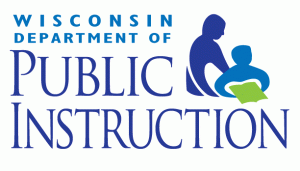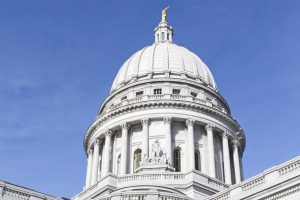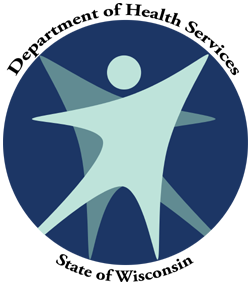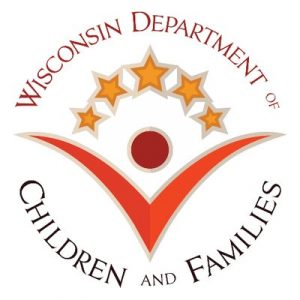by Dan Rossmiller | Aug 24, 2020 | Legislative Update Blog, State Issue
 Earlier this month, the DPI issued a regulatory flexibility framework consisting of two parts: a COVID-19 flexibility application and a series of policy provisions on key topics to address flexibility needs. The initial set of policy provisions addressed the following issues: licensure, pupil count dates, transportation, school nutrition, and the school day milk program.
Earlier this month, the DPI issued a regulatory flexibility framework consisting of two parts: a COVID-19 flexibility application and a series of policy provisions on key topics to address flexibility needs. The initial set of policy provisions addressed the following issues: licensure, pupil count dates, transportation, school nutrition, and the school day milk program.
Today, the DPI updated the policy provision guidance to cover additional topics, including: open enrollment, hours of instruction, various school safety drills (fire, tornado and safety), attendance, truancy, and educator effectiveness. The availability of this new guidance was communicated via an email to district administrators.
(more…)
by Dan Rossmiller | Aug 21, 2020 | Legislative Update Blog, State Budget, State Issue
 Budget news? Rumblings from the Capitol suggest that we may be getting closer to the release of updated estimates regarding the state’s fiscal condition. Indeed, some Capitol observers have speculated we may have some news as soon as early next week, noting that one of the co-chairs of the state’s budget writing Joint Committee on Finance is scheduled to speak publicly on Tuesday about the condition of the state budget. Whether this is an indication that an official LFB memo may on its way or simply reflects the co-chair’s personal opinions remains to be seen.
Budget news? Rumblings from the Capitol suggest that we may be getting closer to the release of updated estimates regarding the state’s fiscal condition. Indeed, some Capitol observers have speculated we may have some news as soon as early next week, noting that one of the co-chairs of the state’s budget writing Joint Committee on Finance is scheduled to speak publicly on Tuesday about the condition of the state budget. Whether this is an indication that an official LFB memo may on its way or simply reflects the co-chair’s personal opinions remains to be seen.
Memos from the non-partisan Legislative Fiscal Bureau (LFB) released earlier this summer have detailed the decline in state tax revenues, but have also noted difficulties in making year-over-year comparisons because tax collection numbers were affected by the extension of income and franchise tax filing deadlines from April to July 15 in 2020. As those tax returns are now in, it will be easier to produce numbers on the extent of the decline.
(more…)
by Dan Rossmiller | Aug 21, 2020 | Legislative Update Blog, State Issue
 In support of digital equity and in recognition of Digital Equity Outreach Month, DPI will be co-hosting a webinar today (Friday, August 21st) at 10:00 a.m. (includes link to register). The webinar is offered by the DPI along with EducationSuperHighway (ESH), DPI’s nonprofit partner, whose mission is to increase broadband access for K-12 students. In partnership with DPI, ESH has created tools and resources to support school districts with addressing connectivity challenges, including a Home Access Needs Assessment Playbook.
In support of digital equity and in recognition of Digital Equity Outreach Month, DPI will be co-hosting a webinar today (Friday, August 21st) at 10:00 a.m. (includes link to register). The webinar is offered by the DPI along with EducationSuperHighway (ESH), DPI’s nonprofit partner, whose mission is to increase broadband access for K-12 students. In partnership with DPI, ESH has created tools and resources to support school districts with addressing connectivity challenges, including a Home Access Needs Assessment Playbook.
Please note: The webinar will be recorded and will be available to those who register.
The webinar covers the playbook and action plan for Digital Equity Outreach Month including:
(more…)
by Dan Rossmiller | Aug 19, 2020 | Legislative Update Blog, National Issue, State Issue
 With students in some Wisconsin school districts and many private schools headed back to school, the state Department of Health Services (DHS) today released new, detailed guidance for schools on how to prevent and handle COVID-19 outbreaks in schools.
With students in some Wisconsin school districts and many private schools headed back to school, the state Department of Health Services (DHS) today released new, detailed guidance for schools on how to prevent and handle COVID-19 outbreaks in schools.
The guidance is not mandatory or exhaustive but rather contains a set of recommendations or “best practices” to inform local decisions to be made by school authorities and local health departments. It includes guidance on moving between different learning environments during an outbreak as well as considerations for school administrators and local public health officials around temporarily halting in-person instruction in an individual classroom or student cohort, in an individual school or across an entire district.
These recommendations were developed with with input from multiple sources, including the Wisconsin Department of Public Instruction (DPI), review of available literature, and guidance from the U.S. Centers for Disease Control and Prevention (CDC).
(more…)
by Dan Rossmiller | Aug 17, 2020 | Federal Issue, Legislative Update Blog, State Issue
 During a recent Wisconsin Policy Forum webinar, state Department of Children and Families (DCF) Secretary Emilie Amundsen strongly encouraged school districts that are beginning the school year using hybrid or virtual instructional models to collaborate with individuals and organizations providing child care in their districts to find ways to meet family needs.
During a recent Wisconsin Policy Forum webinar, state Department of Children and Families (DCF) Secretary Emilie Amundsen strongly encouraged school districts that are beginning the school year using hybrid or virtual instructional models to collaborate with individuals and organizations providing child care in their districts to find ways to meet family needs.
A consequence of some schools moving away from in-person instruction is that this increases the need for child care services for school-age children. Unfortunately, this increased need comes at a time when child care availability is greatly reduced statewide.
(more…)
 Earlier this month, the DPI issued a regulatory flexibility framework consisting of two parts: a COVID-19 flexibility application and a series of policy provisions on key topics to address flexibility needs. The initial set of policy provisions addressed the following issues: licensure, pupil count dates, transportation, school nutrition, and the school day milk program.
Earlier this month, the DPI issued a regulatory flexibility framework consisting of two parts: a COVID-19 flexibility application and a series of policy provisions on key topics to address flexibility needs. The initial set of policy provisions addressed the following issues: licensure, pupil count dates, transportation, school nutrition, and the school day milk program. Budget news? Rumblings from the Capitol suggest that we may be getting closer to the release of updated estimates regarding the state’s fiscal condition. Indeed, some Capitol observers have speculated we may have some news as soon as early next week, noting that one of the co-chairs of the state’s budget writing Joint Committee on Finance is scheduled to speak publicly on Tuesday about the condition of the state budget. Whether this is an indication that an official LFB memo may on its way or simply reflects the co-chair’s personal opinions remains to be seen.
Budget news? Rumblings from the Capitol suggest that we may be getting closer to the release of updated estimates regarding the state’s fiscal condition. Indeed, some Capitol observers have speculated we may have some news as soon as early next week, noting that one of the co-chairs of the state’s budget writing Joint Committee on Finance is scheduled to speak publicly on Tuesday about the condition of the state budget. Whether this is an indication that an official LFB memo may on its way or simply reflects the co-chair’s personal opinions remains to be seen. With students in some Wisconsin school districts and many private schools headed back to school, the state Department of Health Services (DHS) today released new, detailed guidance for schools on how to prevent and handle COVID-19 outbreaks in schools.
With students in some Wisconsin school districts and many private schools headed back to school, the state Department of Health Services (DHS) today released new, detailed guidance for schools on how to prevent and handle COVID-19 outbreaks in schools. During a recent
During a recent